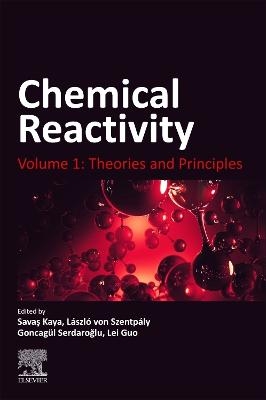
Chemical Reactivity
Elsevier - Health Sciences Division (Verlag)
978-0-323-90257-1 (ISBN)
Beginning with an exploration of different theories and principles relating to electronic structure and reactivity of confined electronic systems, the book goes on to highlight key information on such topics as Dyson orbitals, target-ion overlaps, reaction fragility, magnetizability principles and the Fuki function. Density Functional Theory is discussed in relation to numerous different principles and approaches, with further information on constrained methods and diabatic models, bonding evolution theory, orbital-based population analysis models and charge transfer models, and Quantum chemistry and QTAIM.
Consolidating the knowledge of a global team of experts in the field, Chemical Reactivity, Volume 1: Theories and Principles is a useful resource for both students and researchers interested in gaining greater understanding of the principles and theories underpinning chemical reactivity analysis.
Savaş Kaya is associate professor at Sivas Cumhuriyet University, Turkey. His research interests lie in theoretical chemistry, computational chemistry, materials science, corrosion science, physical inorganic chemistry, and coordination chemistry. László von Szentpâly currently works at the Faculty of Chemistry, Universität Stuttgart. A member of American Chemical Society with a good reputation in the field of theoretical chemistry, László’s achievements include research on the valence states interaction model of chemical bonding (VSI model) and molecular modelling of ultimate intercalated carcinogens. He has more than 35 research articles, reviews and book chapters on concepts and applications in Density Functional Theory to his name. Goncagül Serdaroglu obtained her PhD degree from Sivas Cumhuriyet University’s Physical chemistry (Theoretical Chemistry) department and was a post-doctoral fellow with Prof. Joseph Vincent Ortiz (Auburn University, USA). At present, she works at Sivas Cumhuriyet University (Math. and Sci. Edu. Department) as Assistant Professor. Her primary research investigates the chemical reactivity behavior of pharmaceutically important molecules using computational tools. Recently, she has focused on the spectroscopic (IR, NMR, UV) and NLO (nonlinear optic) properties of molecular systems. She has published 30 research papers in key computational theoretical chemistry-related journals Lei Guo received his PhD degree in materials chemistry from the Chongqing university of china. His research is dedicated to synthesis and characterization of organic molecules and their application towards corrosion inhibition property for the protection of metals and alloys from acid corrosion. His interests also encompass theoretical and experimental research in condensed matter physics
1. The importance of correlation in the molecular orbital picture
2. Dyson orbitals and chemical bonding
3. Coupled-cluster theory and chemical reactivity
4. New developments in the Interacting Quantum Atoms (IQA) approach
5. Conceptual Ruedenberg theory of chemical bonds: the necessary step beyond conceptual DFT
6. Electron-density-based analysis and electron density functional theory (DFT) methods
7. Information-theoretic concepts in theory of electronic structure and chemical reactivity
8. Excited-state density functional theory
9. Reaction fragility method: monitoring evolution of atoms and bonds on a reaction path
10. Looking behind the scenes of Grubbs catalysis with the Unified Reaction Valley Approach
11. The diabatic model of intermediate stabilization for reaction mechanism analysis: a link to valence bond and Marcus theories
12. Main concepts and applications of DFTB approach
13. Chemical reactivity insights from the use of constrained methods
14. On the analysis of the Fukui function
15. Analytic calculation of Fukui functions and related reactivity descriptors
16. New insights from a bonding evolution theory based on the topological analysis of the electron localization function
17. Experimental quantum chemistry and chemical reactivity
18. Quantum similarity description of a unique classical and quantum QSPR algorithm in molecular spaces: the connection with Boolean hypercubes, algorithmic intelligence, and Gödel’s incompleteness theorems
| Erscheinungsdatum | 10.07.2023 |
|---|---|
| Zusatzinfo | Approx. 115 illustrations; Illustrations |
| Verlagsort | Philadelphia |
| Sprache | englisch |
| Maße | 152 x 229 mm |
| Gewicht | 950 g |
| Themenwelt | Naturwissenschaften ► Chemie ► Physikalische Chemie |
| ISBN-10 | 0-323-90257-X / 032390257X |
| ISBN-13 | 978-0-323-90257-1 / 9780323902571 |
| Zustand | Neuware |
| Informationen gemäß Produktsicherheitsverordnung (GPSR) | |
| Haben Sie eine Frage zum Produkt? |
aus dem Bereich


